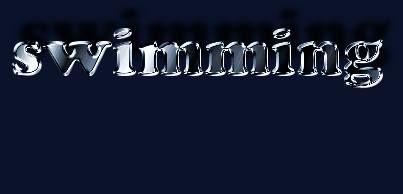 |
 |
 |
swimming equpments:
togs
 |
||
goggles |
||
|
swim caps |
||
|
swimming is important so hear is some information about swimming
|
|
The sport of swimming has been recorded since prehistoric times; the earliest recording of swimming dates back to Stone Age paintings from around 7,000 years ago. Written references date from 2000 BC. Some of the earliest references to swimming include the Gilgamesh, the Iliad, the Odyssey, the Bible, Beowulf, The Holy Quran along with others. In 1538, Nikolaus Wynmann, a German professor of languages, wrote the first swimming book, The Swimmer or A Dialogue on the Art of Swimming (Der Schwimmer oder ein Zweigespräch über die Schwimmkunst).
Swimming emerged as a competitive sport in the 1830s in England. In 1828, the first indoor swimming pool, St George's Baths was opened to the public.[1] By 1837, the National Swimming Society was holding regular swimming competitions in six artificial swimming pools, built around London. The sport grew in popularity and by 1880, when the first national governing body, the Amateur Swimming Association, was formed, there were already over 300 regional clubs in operation across the country.[2]
In 1844 two Native American participants at a swimming competition in London introduced the front crawl to a Western audience. Sir John Arthur Trudgen picked up the hand-over stroke from some South American natives and successfully debuted the new stroke in 1873m, winning a local competition in England. His stroke is still regarded as the most powerful to use today.[3]
Captain Matthew Webb was the first man to swim the English Channel (between England and France), in 1875. He used breaststroke, swimming 21.26 miles (34.21 km) in 21 hours and 45 minutes. His feat was not replicated or surpassed for the next 36 years, until T.W. Burgess made the crossing in 1911.
Other European countries also established swimming federations; Germany in 1882, France in 1890 and Hungary in 1896. The first European amateur swimming competitions were in 1889 in Vienna. The world's first women's swimming championship was held in Scotland in 1892.[4]
Swimming became part of the first modern Olympic Games in 1896 in Athens. In 1902, the Australian Richmond Cavill introduced the front crawl to the Western world. In 1908, the world swimming association, Fédération Internationale de Natation (FINA), was formed. Butterfly was developed in the 1930s and was at first a variant of breaststroke, until it was accepted as a separate style in 1952.